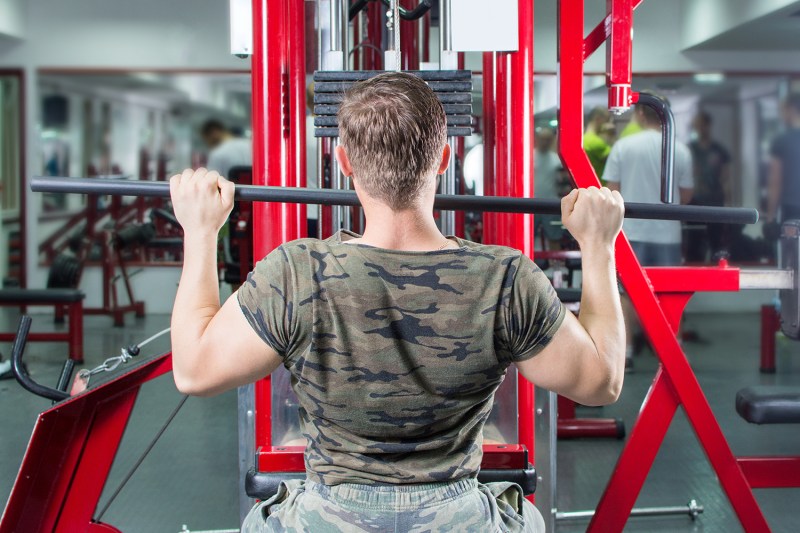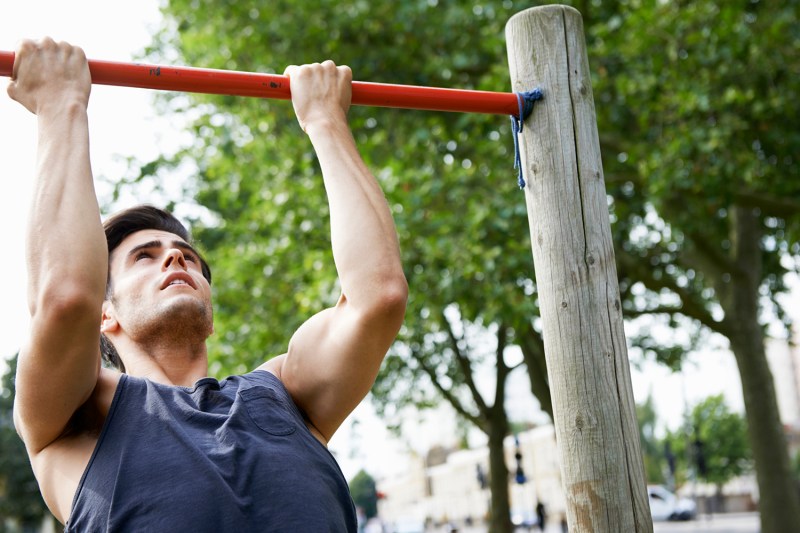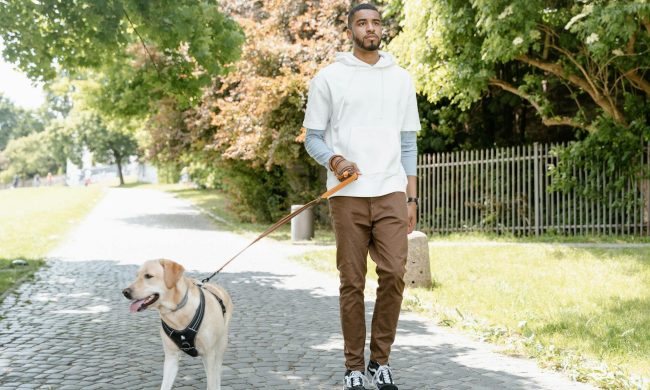Your latissimus dorsi muscle, or “lats,” is the widest muscle in the human body. The lats are a large, triangular-shaped muscle that runs across your lower-mid back and helps stabilize your back while you are extending your shoulders as you would do in moves like the lat pulldown and the pull-up. The close-grip lat pulldown is one of the most rewarding exercises for carving strong, defined back muscles and targeting those lats. So, if you’re hoping to achieve a more defined look in your back muscles, you should dive into the benefits of the close-grip lat pulldown. Keep reading to learn more about this exercise, including common mistakes to avoid, variations, and more.
What is the close-grip lat pulldown?

With the wide-grip lat pulldown, your hands are gripping the bar a little wider than shoulder distance apart. The close-grip lat pulldown is a variation of the lateral pulldown exercise where your hands are closer together when you’re gripping the bar. There are also other types of handles that you can hold and pull down with your hands closer together in front of you.
What muscles does the close grip lat pulldown target?

The primary muscles worked by the close-grip lat pulldown are your latissimus dorsi. You’ll also target your rhomboids and traps for a bigger and stronger back and work on your grip strength. The secondary muscles targeted are your biceps, abs, and shoulder deltoids. Your back does most of the work to bring the weight down, but your biceps are also fully contracted. You activate your core to stabilize the movement.
Is the wide or close grip better for your lats?
The closer grip allows for an increased range of motion that activates and contracts more muscle fibers. There’s also greater activation of your traps and rhomboids. If you want to target your lower lats, the close-grip lat pulldown might be the best choice. That said, you’ll still get a killer back workout with the wide-grip lat pulldown, and some people might find the grip position a little more comfortable.
What are the benefits of the close-grip lat pulldown?

Here are the many benefits of the close-grip lat pulldown:
- It builds your entire back.
- Emphasize your lats.
- Less stress on the lumbar spine.
- Boost upper body and arm strength.
- Develop a more defined back.
- Strengthen your posterior chain.
- Improve your posture and grip strength.
- Work your pulling muscles.
How to do the close grip lat pulldown

You can use a cable machine to perform close-grip lat pulldowns, either seated or standing up. Here’s how to do the close-grip lat pulldown for a more powerful back:
- From a seated position, grip the bar with a close grip with your hands spaced just inside shoulder-width.
- Keep your chest up and pull the bar down towards your chest.
- You should feel your shoulder blades squeezing together as the bar reaches your chest.
- Slowly release the bar back up.
- Repeat until you complete the set.
How many sets and reps should you do?
Shoot for three or four sets of 10-12 reps. As you become more advanced, you can adjust your sets, reps, and weight accordingly. Always work on perfecting your form before increasing your reps or weight.
Common mistakes to avoid

Here are the most common mistakes to avoid when performing the close-grip lat pulldown:
- Using momentum to help pull the weight down.
- Not using the full range of motion.
- Using your arms more than your upper back to pull the weight.
- Using too much weight that compromises your form.
- Failing to engage your shoulder blades.
Top tips to improve your form
These tips will help you to improve your form so you can amplify your back-bulking results:
- Make sure your legs are secured in a comfortable position.
- Sit up tall and engage your core throughout the movement.
- Make sure you’re squeezing your shoulder blades.
- Work at a steady pace that allows you to maintain control and proper form.
- Don’t let your head jut forward while you’re pulling.
Close grip lat pulldown variations and alternatives

There aren’t too many variations of the close-grip lat pulldown. Of course, there’s the wide-grip and the single-arm close-grip pulldown, where you work on one arm at a time, which can help with muscular imbalances.
Sprinkling in variety with alternatives like the pull-up or the dumbbell seal row might motivate you to continue your training program.
The bottom line
The closer grip allows for an increased range of motion and better targets your lower lats. Shoot for three or four sets of 10-12 reps and adjust accordingly as you advance. If you stick with it, the close-grip lat pulldown can set you on the path to enviable, robust back muscles.



